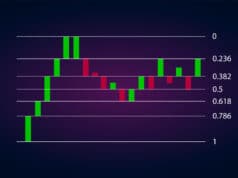Overview
A stop-loss is an order set by a trader to close a trade at a specific price automatically. When most think about a stop-loss, they tend to assume a stop-loss is purely for managing losses.
Naturally, this is not a wrong assumption. We often use such orders to automatically exit our positions when the price reaches an unfavorable level, nullifying the trade setup altogether.
Moreover, stop-losses also play a role when taking partial profits or when traders move the stop-loss to their entry point (known as a breakeven trade).
However, there is one big problem – slippage.
Slippage is a pricing irregularity where orders execute at different prices than requested due to liquidity and volatility issues. Therefore, there is never a guarantee a stop-loss will close at the predetermined price set by the trader because of this event.
Slippage can occur not only for entries but also exits. So, the solution here is guaranteed stop-loss orders (GSLOs). As the term suggests, this type of order ensures a fill at the requested price regardless of any possible market changes.
The implications between regular and guaranteed stop losses
A GSLO works precisely the same as an ordinary stop loss, except it will definitively close at the pre-set price regardless of market conditions. To better appreciate the usefulness of GSLOs, let’s look at an example below.
A trader opens a EUR/USD buy position worth one lot at 1.21000 with a 50 pip stop-loss at 1.21500. This loss equates to $500 if we consider each pip in a standard lot is worth $10. Let’s assume a high-impact news event moves the market against the trader, but unfortunately, the stop-loss closes at 1.21600 instead of the set 1.21500 due to slippage.
In this case, the trader’s loss is now $600 (because of the extra ten pips) rather than the $500 they expected. With a GSLO, the loss would still be the original $500 since the broker accepts the risk of the slippage on their behalf.
The implication is the potential for traders to lose more than they initially thought, where GSLO can help them. In most cases, brokers do not offer any compensation for slippage incurred using a standard stop loss.
Such irregularities aren’t only related to losses, but similar events occur when traders lock in partial profits. If slippage happens with regular stop loss, a profitable position can suddenly turn into one with a slight loss, which is an unfortunate event for any trader.
The cons of guaranteed stop-loss orders
Although GSLOs do provide an understandable benefit, the only issue is they come at a premium. Some brokers charge a trader for placing a GSLO even when it never gets triggered and may not refund it if they decide to revoke it.
Other brokers only levy the premium when the order triggers in the market. Understandably, a brokerage accepts the risk of slippage on their client’s behalf, necessitating the charge. Unfortunately, the rates vary substantially across different providers, meaning traders have to shop around.
Regardless, GSLOs could easily double transaction costs if we consider traders already incur a spread and may further incur commission and swaps. Moreover, some brokers might require a minimum stop distance to use a GSLO. With a regular stop-loss, there is not as much of a limitation.
Traders who may benefit from guaranteed stop losses
The majority of brokerages do not offer guaranteed stop losses, a sign perhaps there isn’t yet enough of a demand for them. However, one may be wondering which type of trader could benefit from such stop-losses.
Ultimately, this kind of order is really for those concerned with slippage. Slippage is a bit of a catch-22 because while it’s a rare occurrence, assuming the broker’s execution is top-notch, it can often result in a trader taking a bigger loss or entering a trade at a worse point than desired.
Some traders also still have concerns forex might experience a flash crash. This event is even rarer since the markets only last encountered this in January 2019. Generally, as forex is the most liquid financial market globally, we have the advantage of efficient execution at least 95% of the time with few errors compared to other instruments.
Nonetheless, several kinds of traders could reap the advantage of GSLOs:
- High-frequency traders. It’s logical to assume high-frequency traders are more likely to benefit from guaranteed stop losses. They are more exposed to events of slippage that may occur during high-impact news events or other busier periods.
The only disadvantage is the transaction costs increase on a trade-by-trade basis. Therefore, depending on the magnitude of their average profits, GSLOs might be detrimental to their overall profitability.
- Long-term traders. The advantage of swing and position traders is GSLOs may not overwhelmingly increase their trading costs because of their limited trading frequency. They could consider this order to mitigate against the risks of holding positions overnight or gapping, which are periods where slippage is likelier.
Final word
Only a handful of brokers provide GSLOs, and they will always offer them at variable premiums. For those who are particularly concerned about slippage for closing their positions at a loss or profit, a GSLO is a viable mechanism to prevent this rare event.
Despite this incredible advantage, GSLOs come at a premium that may be an unnecessary factor on the top of the trading costs one already incurs.




